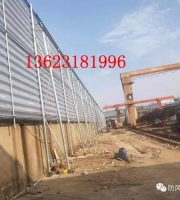In the field of construction engineering, we often hear the term “full scaffolding”. So, what does it actually mean? Today, we will provide a detailed explanation and extend the discussion to several daily issues related to it..

Full hall scaffolding, as the name suggests, refers to scaffolding erected at a certain distance and in accordance with regulatory requirements throughout the entire construction area. The characteristics of this type of scaffold are wide coverage area, stable structure, and the ability to withstand large loads. In construction projects, full scaffolding is commonly used to support formwork, construction platforms, or for high-altitude operations..

The full scaffold mainly consists of upright poles, horizontal bars, sweeping poles, scissor braces, etc. The upright pole is the vertical support of a scaffold, and the horizontal pole connects each upright pole to form a stable frame structure. The sweeping rod is located at the bottom of the scaffold to enhance overall stability. Scissor braces serve as diagonal supports, further enhancing the load-bearing capacity of the scaffold..

When setting up a full scaffolding, it is necessary to follow certain norms and requirements. Firstly, it is necessary to ensure that the foundation of the scaffold is solid, level, and able to withstand the weight and construction load of the scaffold. Secondly, the erection of scaffolding must comply with safety standards, such as strict control of the spacing between upright poles and the step spacing of horizontal bars. In addition, safety facilities such as wall connectors and scissor braces for scaffolding must also be in place..
Full hall scaffolding and fastener scaffolding differ in structure and usage scenarios. Coupler type scaffolding mainly consists of steel pipes and fasteners, which are connected together to form a stable support structure. This type of scaffolding is flexible to set up and suitable for various complex construction environments. Full hall scaffolding, on the other hand, places greater emphasis on integrity and stability, and is typically used in large-scale construction areas such as floor pouring and wall masonry..
Ensuring the safety of the full scaffolding requires multiple approaches. Firstly, the foundation of the scaffold should be treated before installation to ensure its solidity and flatness. Secondly, it is necessary to strictly follow the specifications and requirements for installation, and control key parameters such as the spacing between upright poles and the step distance of horizontal bars. In addition, it is necessary to regularly inspect and maintain scaffolding to promptly identify and address potential safety hazards. During use, safety operating procedures should be followed to avoid overloading and illegal operations..
When dismantling a full scaffold, the principle of “erecting before dismantling, and erecting before dismantling” should be followed. Specifically, it refers to the removal of components that were first erected, such as scissor braces, wall connectors, etc., and then the removal of components that were first erected, such as horizontal bars, upright bars, etc. During the dismantling process, the overall stability of the scaffolding should be maintained to avoid collapse accidents. Meanwhile, the dismantled components should be sorted and stacked neatly for future use or disposal..
Full hall scaffolding is one of the indispensable and important facilities in construction projects. Understanding its basic concepts, composition, and installation requirements is crucial for ensuring construction safety and smooth progress. I hope that the introduction and extended question answering in this article can help everyone better understand and apply the important tool of full scaffolding..
Thank you for reading! If you have any questions or suggestions about scaffolding or other construction related knowledge, please feel free to leave a message in the comments section to communicate with us. At the same time, you are also welcome to pay attention to our official account “Xiaoman Answers”, and we will regularly share more practical knowledge and experience of construction engineering!.



